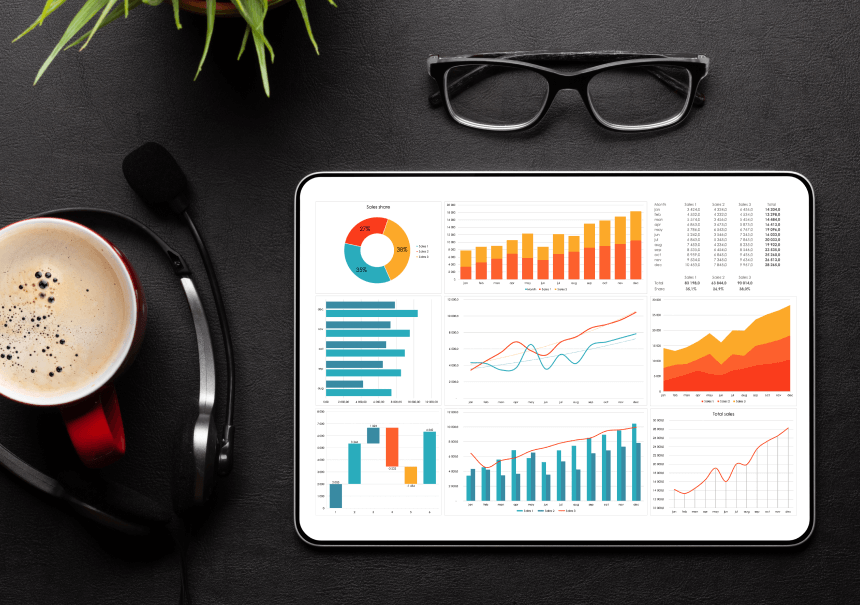5 tips that will help you design a perfect webinar invitation email

Webinars can be very successful sales and lead generation tools, but in order for them to work, you need to get as many attendants as possible. And this is where email marketing steps in the game. In this post, we want to show you how to craft a perfect webinar invitation and what to focus on to get people to sign up for your event.
In the recent Semrush study, respondents placed webinars among the best-performing content formats. For 18% of responders, they are the best type of content you can produce to grow your company:
Source: https://www.semrush.com/goodcontent/state-of-content-marketing/
However, a successful webinar starts with a successful invitation – after all, you need someone to listen to what your speakers have to say, right? Companies use different marketing strategies to get people to sign up for a webinar, but many companies, especially those with extensive email bases, focus on email marketing.
If you’re planning on using this tool as well, you need to start with a great invitation that will stop your recipients from clicking the delete button. And we want to help you create such an invitation! Here’s what you need to focus on:
How to write an effective email invitation
In general, every email invitation has five important elements:
- Subject
- Image (if you use HTML formatting)
- Introduction
- Specifics of the event
- CTA
Let’s have a look at how you can make the most of each of them.
EMAIL SUBJECT
First off, ensure your webinar’s topic is actually interesting to your target audience. Self-promotional webinars aren’t so popular – people want to learn something and get some real value from your webinar, so if you want to succeed, you need to give some useful knowledge. A webinar titled “See why our product is the best” won’t get you far.
Next, think about what’s really pressing and interesting to your audience. Your webinar should tackle things that really matter to your audience. When these two points are met, crafting an actual email subject is a breeze.
Suppose you want to conduct a webinar on how marketing automation can support an SME. Your title could be “[Webinar] 6 steps to automate mundane tasks in your company”.
Why is this subject good?
- It’s to the point – after reading the subject line, your recipients know what to expect.
- It’s short – there’s no unnecessary information, only specifics.
- It’s personalized – we’re not talking about any company; we address the user specifically and talk about THEIR company.
- Lastly, it gives a real promise – that attendees will learn six steps (numbers are effective, too!) that will help them achieve the desired outcome.
You can try and use different titles, e.g., you can phrase it as a question: “[Webinar] Do you know how to automate mundane tasks in your company? 6 steps to success”. Additionally, if you’re using an email marketing tool, you can add an emoji to your subject line, but keep in mind that not all mailboxes will accept those.
Another good idea is to add some sort of urgency. For example, you could write ““[Webinar] Only 10 seats left! 6 steps to automate mundane tasks in your company”.
One more element – header text
Some email marketing tools will allow you to add a header text or a preview. Use it to give more information; don’t repeat what you’ve written for your subject line. For instance, based on our exemplary title, you could add such a header:
“Join us for free and learn how to work more effectively”
BANNER
If you use an email editor, you probably can add an image to your invitation. Again, not every mailbox will automatically download it (sometimes users will need to give their consent to download the image), but you can test a version of your email that contains an image and see how it performs.
A good invitation banner:
- Is specific – include all the important details on the banners, such as speakers (include their photos!), topic, time & date, and a sign-up link.
- Ensures all the details – logotypes, photos, fonts – are clearly visible.
- Stands out from the background – you can use different background colors to ensure people know where your image begins and ends.
We advise you to have two versions of your invitation (with and without an image) and run A/B tests to see which option is more attractive to your recipients.
INTRODUCTION
The introduction must be 100% focused on your recipients. Don’t tell them how awesome your webinar will be; concentrate on what they can get from it. Keep in mind that people don’t really care about your company or the fact that you’re organizing a webinar. What really matters is what they will get from it.
Here’s what you could write:
“Hello, [first name]!
How much time per day do you spend doing mundane tasks that you don’t even like but feel like you must do them? Probably at least an hour every day.
The good news is that you can automate the vast majority of them! And it’s easier than you might think (no need to be an IT guru).
We invite you to our free webinar, where in just 30 minutes, we’ll show you 6 steps that will help you automate your work and regain your time. You will learn:
- Which tasks to automate
- What are marketing automation options available for you
- How much time can you save each day”
As you can see, there are some details in the introduction, but this part focuses on the question of why your recipients should sign up for your event. Our introduction also deals with some typical objections (no tech knowledge needed) and explains that people won’t have to spend a lot of time learning all this.
SPECIFICS OF YOUR EVENT
In the latter part of your email, you can focus on the specifics and technicalities:
“Sign up for our webinar by clicking here [link].
We’re starting on February 1, 2025 at 1:00 pm (ET)
Once you sign up, you will receive two reminders via email – a day and an hour before the event.
Don’t forget to add this date to your calendar!
We’re excited to meet you!”
If someone is reading this part, this means they are interested, and they just need to know more. So, be concise and specific. Give only the relevant details. Many details (such as the webinar platform that you will use) can be placed on the landing page, not in the email.
CTA
Lastly, you need to close your invitation with a short but strong CTA (call to action). After all, you need people to book their seats right away, correct? At the end of your email, you can place one more link or a button saying something like this:
- Reserve my spot
- Save my seat
- I’m in!
- Sign up now
- Sign up for free
Wrapping up
Pay attention to all those elements, and you will improve your emails’ open and sign-up rates. And if you’re looking for a good email marketing tool, iPresso has everything you need to craft, send, and automate emails in your company.
You can test our platform for free; just go here and send us your company’s details!



